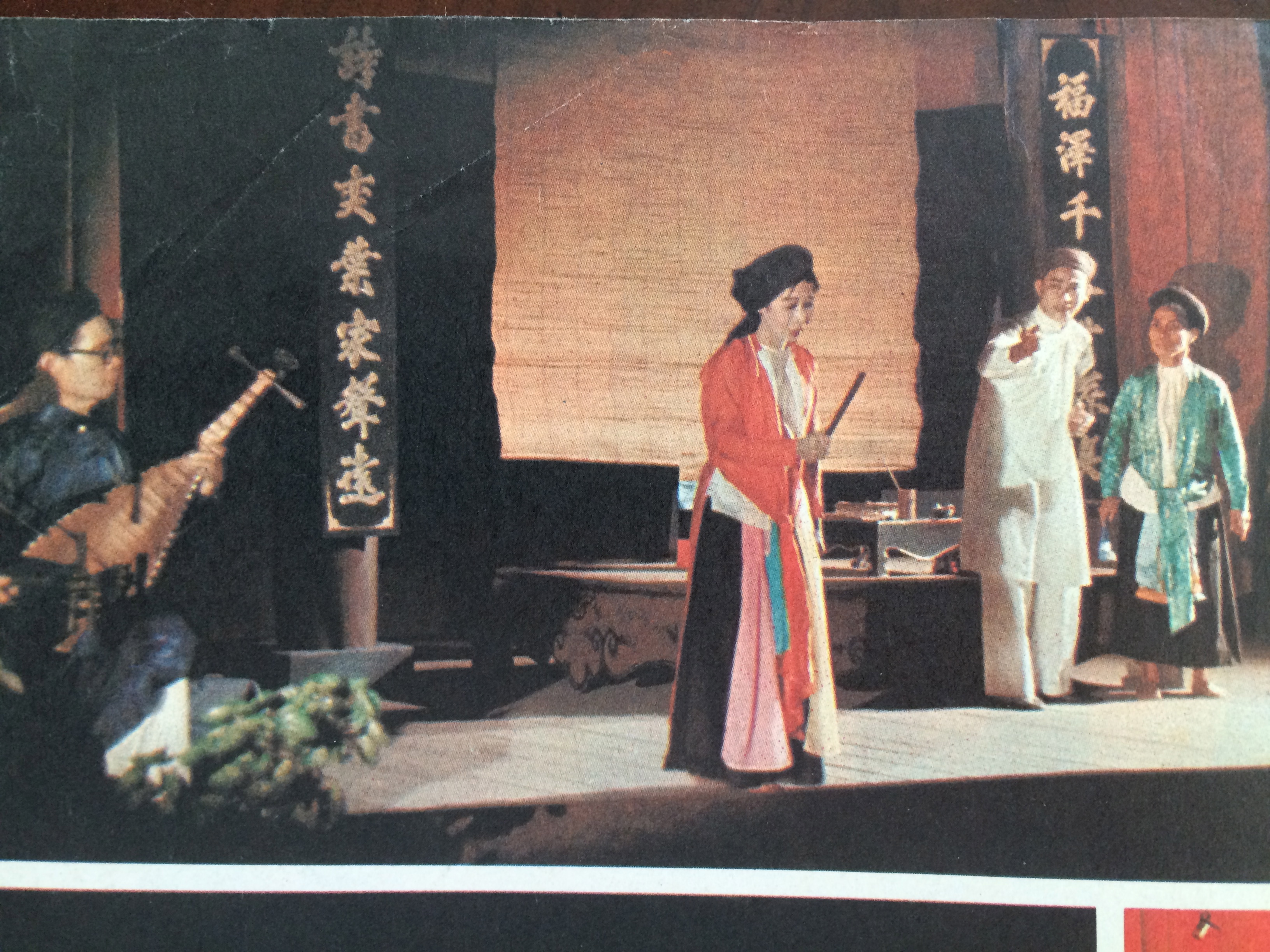|
Trống Chầu
A trống đế or trống chầu is a traditional Vietnamese musical instrument also known as "praise drums". It is a small double-headed drum, beaten with a long wooden stick on the top side, causing a loud snapping sound. Description The two sides of the trống chầu where they are beaten, are made with buffalo hide. The main portion of the drum is carved from jack fruit wood Uses The drummer is typically a well-recognized member of the audience and beats rhythms at the beginning and end of a performance, to mark singing phrases, and as means of appreciation for a performance. It is the largest of the set of drums used in ca trù- the Vietnamese traditional chamber music.Terry E. Miller, Sean Williams ''The Garland handbook of Southeast Asian music'' 2008 - Page 275 "There is also a set of drums played by different drummers. The largest one (trống chầu) is played by an expert, representing the audience." Performers also use it in a chèo ''Chèo'' (, Chữ Nôm: 掉) is ... [...More Info...] [...Related Items...] OR: [Wikipedia] [Google] [Baidu] |
Traditional Vietnamese Musical Instruments
Traditional Vietnamese musical instruments are the musical instruments used in the traditional and classical musics of Vietnam. They comprise a wide range of string, wind, and percussion instruments, used by both the Viet () majority as well as the nation's ethnic minorities. Strings Plucked * - monochord zither: often tuned C3, though tuning varies * - long-necked three-stringed lute with trapezoidal body: tuned G3 C4 * (also called , or ) - moon-shaped two-string lute: no fixed tuning; strings are tuned a 4th, 5th, or 7th (minor), derived from the Chinese * - two-string lute derived from the Chinese *'' Đàn tam'' - fretless lute derived from the Chinese with snakeskin-covered body and three strings: tuned F3 C4 F4 * - long zither derived from the Chinese * - pear-shaped lute with four strings derived from the Chinese ; tuned C4 F4 G4 C5 *'' Đàn tứ'' (also called ''đàn đoản''): short-necked round-bodied lute derived from the Chinese ''yueqin'' or, beginning in the ... [...More Info...] [...Related Items...] OR: [Wikipedia] [Google] [Baidu] |
Ca Trù
''Ca trù'' (, , "tally card songs"), also known as hát cô đầu or hát nói, is a Vietnamese genre of musical storytelling performed by a featuring female vocalist, with origins in northern Vietnam. For much of its history, it was associated with a pansori-like form of entertainment, which combined entertaining wealthy people as well as performing religious songs for the royal court.Ca trù singing , ''UNESCO.org''. Ca trù is inscribed on the list of in need of Urgent Safeguarding in 2009. History There are different myths and theories related to ca trù's conception. There is a theory ...[...More Info...] [...Related Items...] OR: [Wikipedia] [Google] [Baidu] |
Chèo
''Chèo'' (, Chữ Nôm: 掉) is a form of generally satirical musical theatre, often encompassing dance, traditionally performed by Vietnamese peasants in northern Vietnam. It is usually performed outdoors by semi-amateur touring groups, stereotypically in a village square or the courtyard of a public building, although it is today increasingly also performed indoors and by professional performers. Chèo stage art is one of the great cultural heritage of the Vietnamese folk treasure. Chèo has been a popular art form of the Vietnamese people for many generations and has fostered the national spirit through its lyrical content. ''Hát chèo''s origins date to the 12th century during the Lý dynasty and has existed in its present form since roughly the 16th century. It derives from folk traditions, and was orally transmitted; unlike courtly theater traditions, it employs no scenery and sparse costumes and makeup. It involves a combination of traditional set pieces and improvisatio ... [...More Info...] [...Related Items...] OR: [Wikipedia] [Google] [Baidu] |
Vietnamese Musical Instruments
Traditional Vietnamese musical instruments are the musical instruments used in the traditional and classical musics of Vietnam. They comprise a wide range of string, wind, and percussion instruments, used by both the Viet () majority as well as the nation's ethnic minorities. Strings Plucked * - monochord zither: often tuned C3, though tuning varies * - long-necked three-stringed lute with trapezoidal body: tuned G3 C4 * (also called , or ) - moon-shaped two-string lute: no fixed tuning; strings are tuned a 4th, 5th, or 7th (minor), derived from the Chinese * - two-string lute derived from the Chinese *'' Đàn tam'' - fretless lute derived from the Chinese with snakeskin-covered body and three strings: tuned F3 C4 F4 * - long zither derived from the Chinese * - pear-shaped lute with four strings derived from the Chinese ; tuned C4 F4 G4 C5 *'' Đàn tứ'' (also called ''đàn đoản''): short-necked round-bodied lute derived from the Chinese ''yueqin'' or, beginning in the ... [...More Info...] [...Related Items...] OR: [Wikipedia] [Google] [Baidu] |

